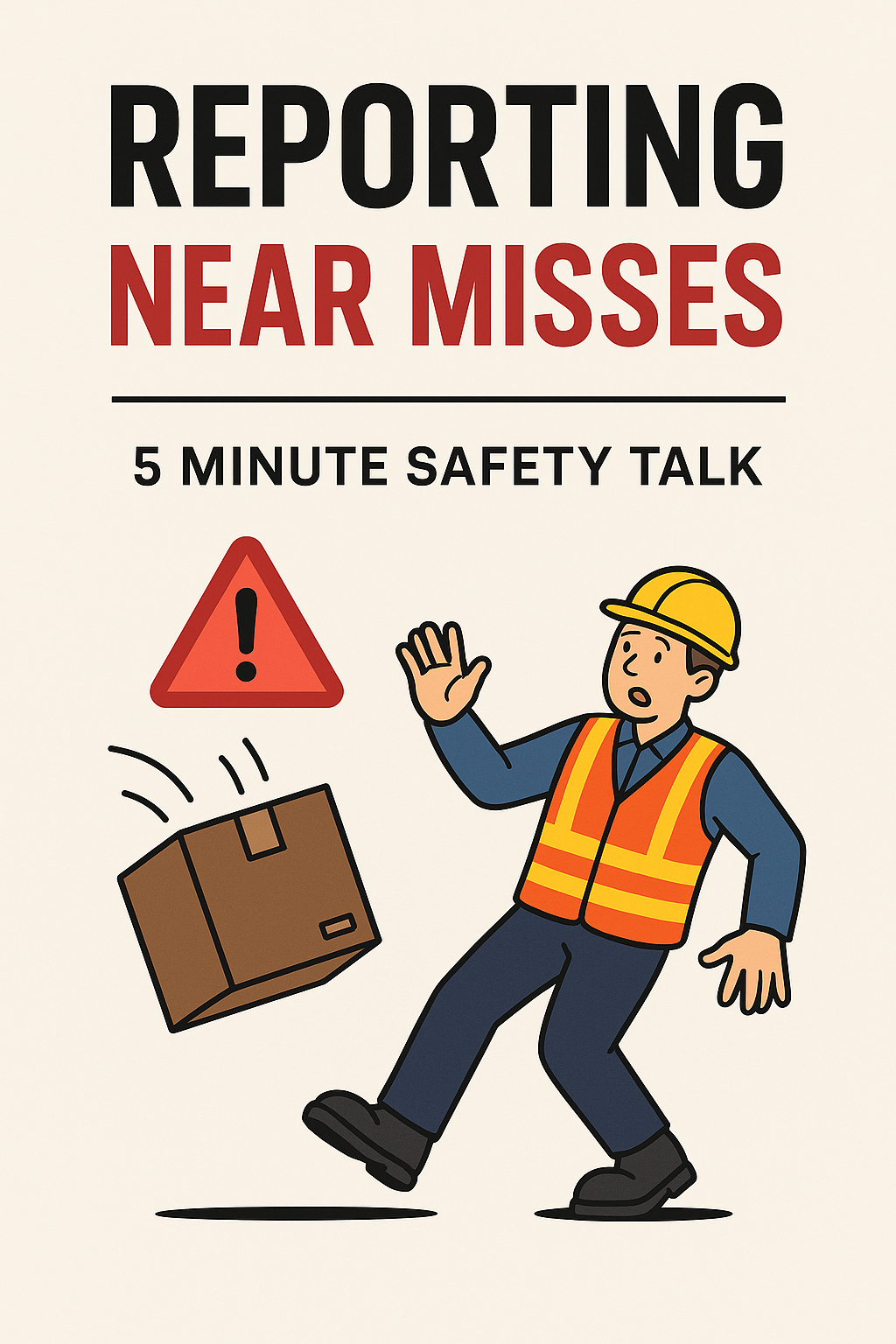
Reporting Near Misses 5 Minute Safety Talk
Good Morning Team,
Today, let’s take a few minutes to talk about something that’s often overlooked—but extremely important—Reporting Near Misses.
Have you ever had a moment on the job where something almost went wrong? Maybe a tool dropped just inches away from your foot. Or maybe you slipped, but caught yourself before falling.
That’s a near miss.
And reporting those moments can help us prevent serious incidents in the future.
What Is a Near Miss?
A near miss is an unplanned event that did not result in injury, damage, or loss—but could have. It’s like a warning sign telling us, “Hey, something’s not right here.”
Examples:
- A falling object that almost hits someone
- A forklift that backs up without noticing a worker nearby
- Slipping on a wet surface but catching yourself
Why Reporting Near Misses Matters
Think of near misses as free safety lessons. They expose hazards before someone gets hurt. Reporting them helps us:
- Identify unsafe conditions or behaviors
- Take corrective action before it’s too late
- Build a culture where safety is proactive, not reactive
- Meet compliance and audit requirements
- Reduce future incidents and injuries
Common Reasons Workers Don’t Report
Let’s be honest—sometimes we ignore near misses. Why?
- “No one got hurt, so why report?”
- “I don’t want to get in trouble.”
- “It’ll take too much time.”
- “I didn’t think it was important.”
- “I didn’t know how to report it.”
Let’s break that mindset. Every near miss is a chance to fix a problem before it becomes serious.
What to Do When You Experience a Near Miss
- Stop and assess the situation
- Make the area safe if there’s an ongoing hazard
- Report the near miss to your supervisor or through the official system
- Provide full details – What happened, where, how, and why
- Be honest – This isn’t about blame; it’s about prevention
Real-World Example
In a warehouse, a worker narrowly avoided a head injury when a poorly stacked box slid off a top shelf. He reported it. On investigation, they discovered several similar storage issues in that area. A quick fix to the racking system and retraining prevented what could’ve been a serious injury later.
Lesson? That report helped save lives.
Encourage a Reporting Culture
As a team, we must:
- Support those who report near misses
- Avoid blaming or shaming
- Treat reports as valuable learning opportunities
- Reward proactive safety behavior
Tips for Improving Near Miss Reporting
- Keep it simple – reporting shouldn’t be a burden
- Use forms or apps if available
- Post reminders in work areas
- Conduct toolbox talks regularly
- Supervisors should lead by example
Final Thoughts
Let’s shift our mindset.
Instead of thinking,
“Nothing happened, so it’s no big deal.”
Think:
“Something could have happened—so let’s fix it before it does.“
Every time you report a near miss, you’re helping yourself, your team, and your workplace become safer.
Summary – What You Should Now Know
- A near miss is a warning sign of a potential incident
- Reporting near misses helps prevent future accidents
- We must create a no-blame culture around safety reporting
- Quick and honest reporting leads to meaningful changes
- Reporting is a shared responsibility—not just for supervisors
Noise Hazards and Hearing Protection 5 Minute Safety Talk
First Aid Awareness 5 Minute Safety Talk
Emergency Evacuation Procedures 5 Minute Safety Talk
Ladder Safety 5 Minute Safety Talk
Manual Handling 5 Minute Safety Talk
5 Unique FAQs
Q1: What if I caused the near miss—should I still report it?
Yes! Reporting isn’t about blame—it’s about learning and fixing hazards.
Q2: Can near misses really prevent future injuries?
Absolutely. Many serious accidents were preceded by similar unreported near misses.
Q3: How do I report a near miss in our company?
Use your site’s reporting form, mobile app, or speak to your supervisor directly.
Q4: Will I get in trouble for reporting a near miss?
No. In fact, it’s encouraged and shows your commitment to safety.
Q5: How often should near misses be discussed with the team?
At least weekly during safety meetings—and immediately after one occurs.
























